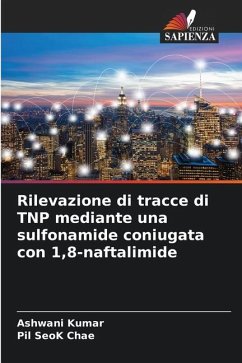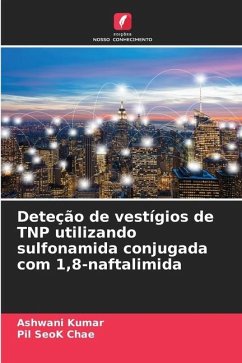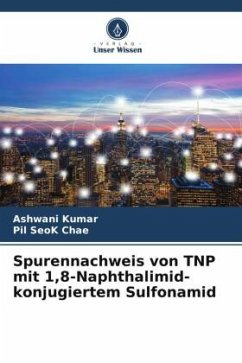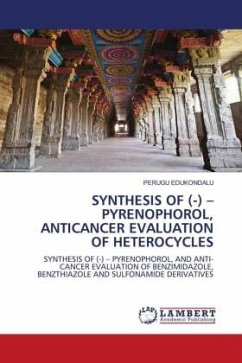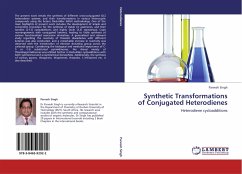
Trace detection of TNP using 1,8-naphthalimide-conjugated sulfonamide
Versandkostenfrei!
Versandfertig in 6-10 Tagen
24,99 €
inkl. MwSt.

PAYBACK Punkte
12 °P sammeln!
TNP (2,4,6-Trinitrophenol) is IUPAC name of picric acid, highly soluble in water and more explosive in nature than TNT. It was used in the World War-1 and before that such as Russo-Japanese war, Battle of Omdurman, Second Boer war, etc. Its widespread use as an antiseptic for the treatment of herpes, small pox, burn treatment, malaria, in dye industries and in chemical laboratories imposes a significant threat to the safety of the environment. TNP intake causes several problems in humans such as eye and skin irritation, liver malfunction, problems related to urinary, gastrointestinal, respirat...
TNP (2,4,6-Trinitrophenol) is IUPAC name of picric acid, highly soluble in water and more explosive in nature than TNT. It was used in the World War-1 and before that such as Russo-Japanese war, Battle of Omdurman, Second Boer war, etc. Its widespread use as an antiseptic for the treatment of herpes, small pox, burn treatment, malaria, in dye industries and in chemical laboratories imposes a significant threat to the safety of the environment. TNP intake causes several problems in humans such as eye and skin irritation, liver malfunction, problems related to urinary, gastrointestinal, respiratory systems as well as chronic diseases such as anemia, cyanosis and cancer. 2-Amino-4,6-dinitrophenol, a metabolite of TNP, itself 10 times more mutagenic than TNP. So it is necessary to develop TNP sensors for the environment and safety of different entrance portals such as: airports, railway/bus stations, tourist spots, malls, and other public locations.



